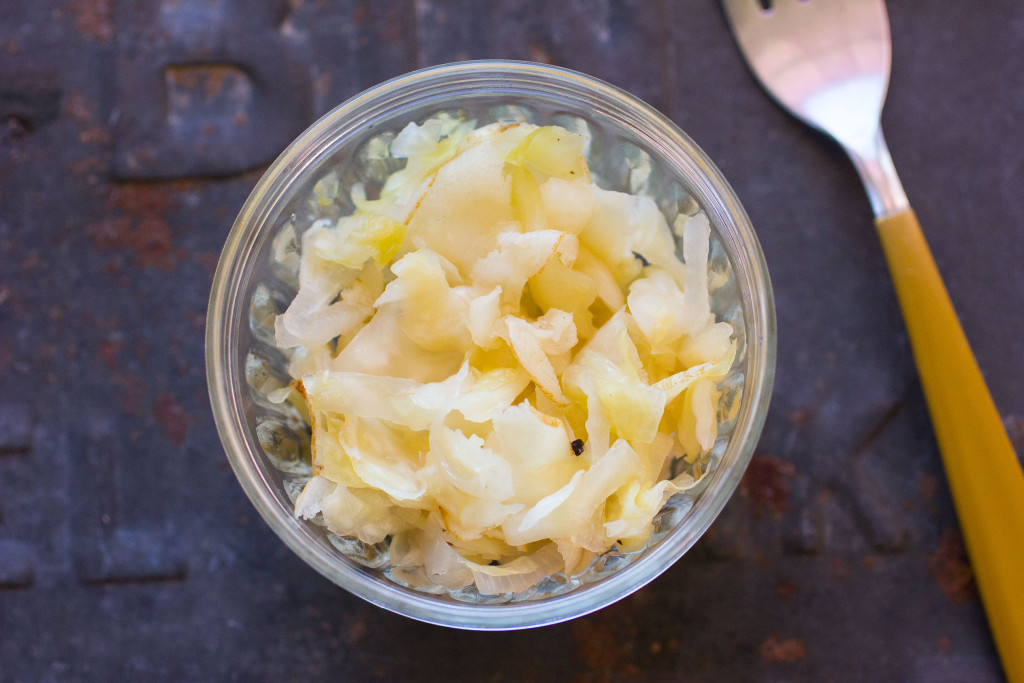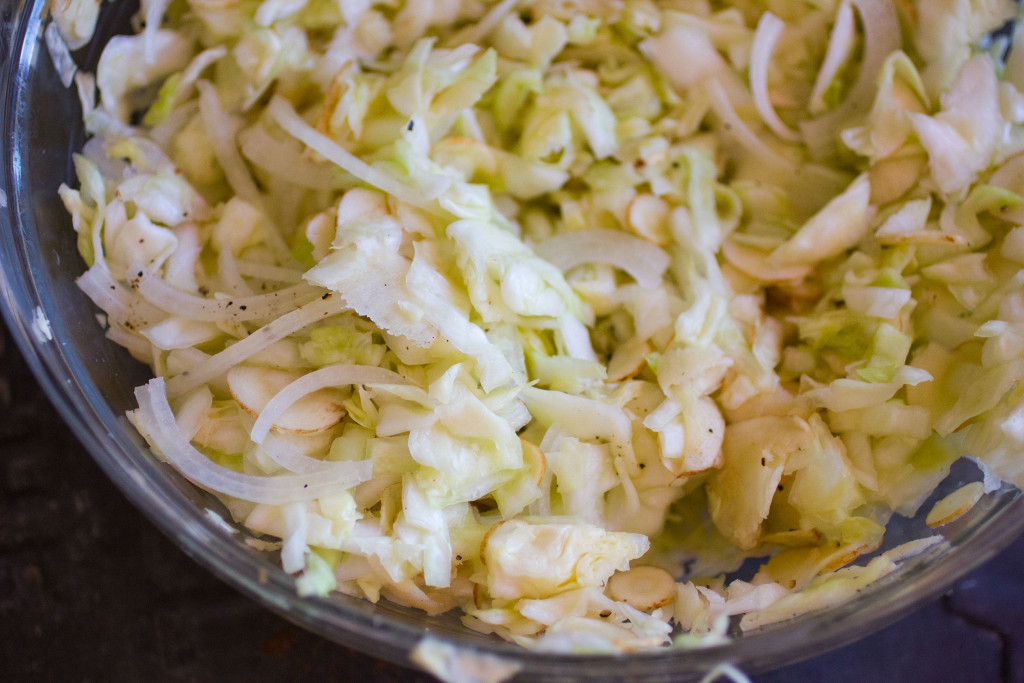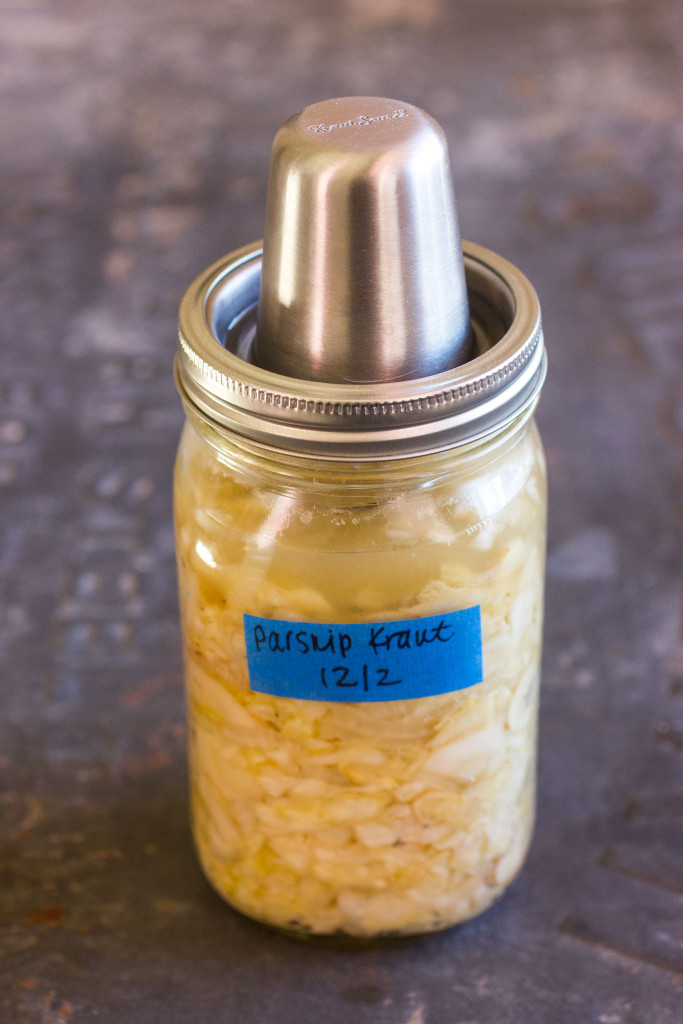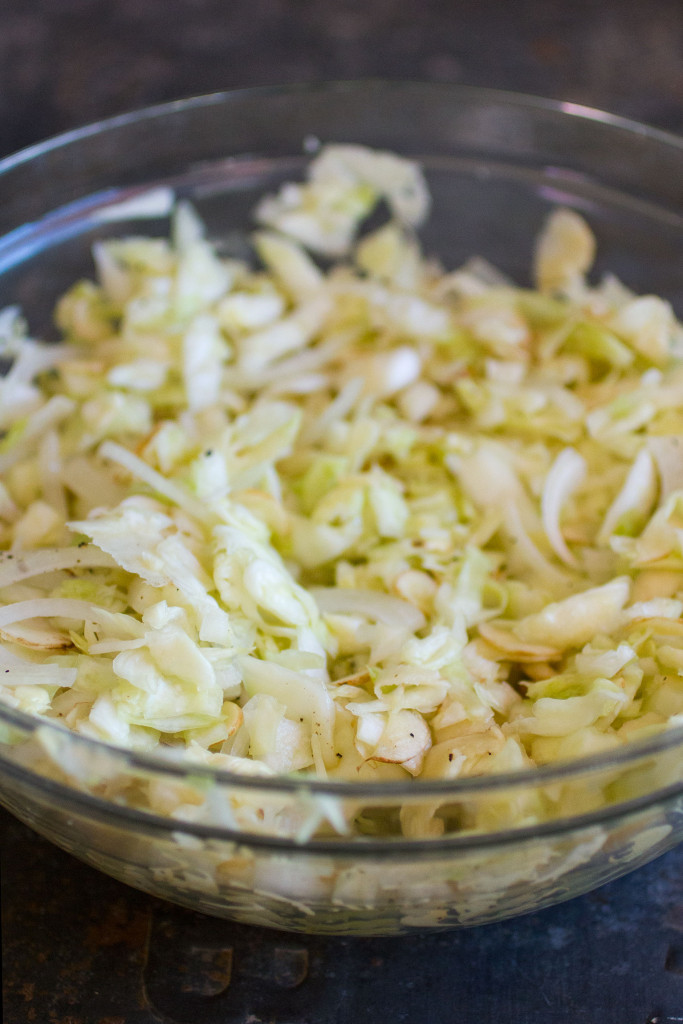When I was working on my book, I really fell in love with experimenting with small-batch vegetable ferments like this one.
Even if you’re not completely sold on fermentation yet–and in my experience it doesn’t take much to get utterly hooked–recipes like this one that make just enough to fill a quart mason jar are a really easy starting point. If you are no stranger to jars of veggies bubbling away on your countertop, scaled-down recipes like this are a perfect way to try out new flavors.
A happy result of just this sort of small-batch play was my love of parsnips in kraut. Adding just a little thinly sliced parsnip to kraut adds a really delicious peppery kick. It’s a very unique flavor that is hard to compare to anything else. And although we all have sweets on our mind right now, cool weather is totally fermentation season because it allows for a slow, steady development of flavors.
I also added freshly ground pepper to complement the parsnips as well as some thinly sliced white onions. If you’re not an onion person, you can simply omit them, but they really mellow nicely as they ferment.
Parsnip Kraut
- 575 grams green cabbage finely chopped
- 125 grams parsnips, sliced very thin
- 12 grams fine grain sea salt
- 75 grams white onion, sliced very thin
- 4 turns freshly ground black pepper
- In a large glass bowl, combine the cabbage, parsnips, and salt.
- Use your hands to massage the salt into the vegetables for a couple minutes. You will feel the vegetables start to get slippery and you will see liquid begin to pool at the bottom of the bowl. If you don’t see a layer of liquid at the bottom of the bowl, cover it and allow it to sit at room temperature until you do.
- Stir in the onions and black pepper, then pack the mixture into a clean quart mason jar, one handful at a time. Press each handful until the liquid rises up to meet the vegetables in the jar.
- I prefer to secure my ferments with an airlock like this or this, but this more DIY method also works. Place it out of direct sun, somewhere that you can keep an eye on it.
- You can begin tasting after three days, but I find that especially this time of year, I prefer the taste after two weeks or more.
- Remove the airlock, cover, and refrigerate the finished product for long-term storage.Â






{ 0 comments… add one now }
{ 1 trackback }